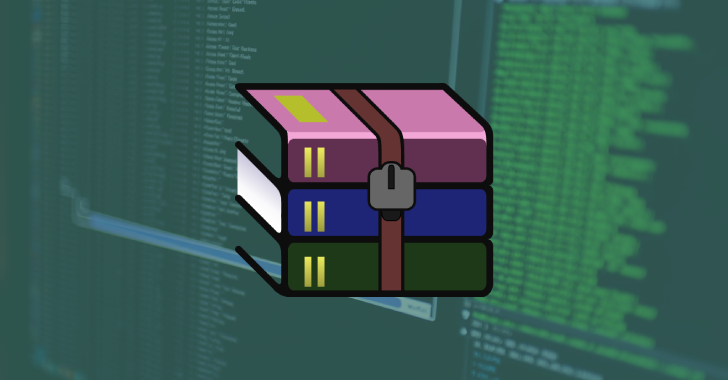
Small arms and light weapons (SALW) have long played a destructive role in contemporary armed conflicts, especially non-international ones. Their widespread availability has exacerbated violence, prolonged hostilities, and undermined efforts toward peace and security. While International Humanitarian Law (IHL) provides principles governing the conduct of hostilities, it does not directly regulate the production, stockpiling, or trade of small arms.
This article explores the intersection between IHL and the proliferation of small arms, the challenges posed by their use in conflict zones, and international efforts to mitigate their impact.
Introduction
Small arms—such as rifles, pistols, and light machine guns—are among the most commonly used weapons in armed conflicts. According to the United Nations, they are responsible for over 200,000 deaths annually in conflicts, often in violations of IHL principles such as distinction, proportionality, and necessity. Although IHL does not categorically ban small arms, it imposes obligations on parties to a conflict regarding their use.
This article examines how IHL principles apply to the use of small arms, the human and societal costs of their unregulated availability, and how international instruments like the Arms Trade Treaty (ATT) complement IHL to reduce their impact.
Definition and Scope of Small Arms
Small arms and light weapons (SALW) generally include:
- Revolvers and self-loading pistols
- Rifles and carbines
- Sub-machine guns
- Assault rifles
- Light machine guns
Light weapons include:
- Heavy machine guns
- Hand-held grenade launchers
- Portable anti-aircraft and anti-tank guns
According to the UN’s 1997 Report of the Panel of Governmental Experts, these weapons are “designed for personal use by armed forces or law enforcement agencies.”
Small Arms and the Conduct of Hostilities
A. IHL Principles Relevant to Small Arms Use
Although IHL does not regulate specific weapons unless explicitly banned (e.g., chemical weapons), it sets rules on how weapons must be used:
- Principle of Distinction: Combatants must distinguish between civilians and combatants. Small arms are frequently used in urban warfare where distinction is difficult, increasing the risk of civilian harm.
- Principle of Proportionality: Attacks using small arms must not cause incidental loss of civilian life about the anticipated military advantage.
- Principle of Precaution: Parties to the conflict must take all feasible precautions to avoid or minimize civilian harm. Indiscriminate use of small arms violates this norm.
Case in point: In conflicts like the civil war in Syria, widespread use of small arms by non-state actors led to indiscriminate killings and serious breaches of IHL.
Widespread Availability and Its Humanitarian Consequences
A. Impact on Civilian Populations
The availability of small arms often leads to:
- Increased civilian casualties
- Targeted killings and executions
- Sexual violence and coercion
- Recruitment of child soldiers
A 2021 UN Office for Disarmament Affairs (UNODA) report highlighted that small arms fuel 60% of conflict-related deaths globally.
B. Hindrance to Humanitarian Access
Militias and non-state armed groups often control areas where they block humanitarian aid using small arms. The fear of armed violence discourages humanitarian workers from accessing affected populations, worsening the humanitarian crisis.
IHL Obligations on States and Armed Groups
A. Obligation to Respect and Ensure Respect
Common Article 1 of the Geneva Conventions obligates states to “respect and ensure respect” for IHL. This includes preventing arms transfers that would contribute to IHL violations.
B. Customary IHL Rules on Conduct and Accountability
Rules 1–24 of the ICRC Customary IHL study outline general principles on the conduct of hostilities. Use of small arms to commit war crimes such as:
- Willful killing
- Attacks against civilians
- Attacks against humanitarian personnel
are punishable under both domestic and international criminal law.
The Arms Trade Treaty (ATT) and Its Complementarity with IHL
The ATT, adopted in 2013 and enforced since 2014, is the most significant international instrument aiming to regulate the global arms trade, including small arms.
A. Key Provisions of the ATT
Article 6: Prohibits arms transfer if it would violate UN Security Council measures or result in war crimes
Article 7: Requires assessment of the potential that weapons will be used to commit serious violations of IHL or human rights
Article 11: Addresses measures to prevent the diversion of arms
B. ATT’s Reinforcement of IHL
The ATT does not replace IHL but strengthens it by:
- Ensuring arms are not transferred where there’s a substantial risk of IHL violation
- Promoting accountability for states exporting arms to conflict zones
Example: Several EU countries have halted arms exports to Saudi Arabia over concerns about IHL violations in Yemen.
Regional and National Measures to Control SALW
A. Regional Frameworks
The Nairobi Protocol (2004), for African states, focuses on the control and reduction of SALW
The ECOWAS Convention (2006) prohibits arms transfer to non-state actors
The Inter-American Convention against Illicit Manufacturing of and Trafficking in Firearms (CIFTA)
B. National Implementations
Many countries have enacted national legislation to implement the ATT or similar arms control measures, though effectiveness varies:
- India’s Arms Act, of 1959 regulates licensing and possession of firearms
- United States’ Arms Export Control Act allows restrictions on exports to countries violating IHL
Challenges in Regulating the Availability of Small Arms
A. Illicit Trade and Black Markets
The vast black market for small arms undermines international treaties. Conflict zones such as the Sahel region and Libya have become hubs for trafficking.
B. Loopholes in National Controls
Some countries have weak or poorly enforced domestic laws, making them conduits for arms smuggling despite being ATT signatories.
C. Non-State Actors and Unregulated Transfers
Most IHL violations involving small arms are perpetrated by non-state actors. Many such groups are outside the reach of international treaties or sanctions.
Role of International Criminal Law
A. Accountability for Use of Small Arms in War Crimes
International courts, such as the ICC, have prosecuted warlords for:
- Use of small arms to commit genocide and crimes against humanity (e.g., Lubanga case)
- Recruitment of child soldiers armed with AK-47s
- Attacks on civilian populations
B. Deterrent Effect and Complementarity
The presence of legal frameworks creates pressure on states and commanders to regulate how small arms are distributed and used.
Recommendations and Way Forward
- Strengthen Enforcement of ATT and National Laws: Ensure stricter monitoring and penalties for illegal arms transfers.
- Capacity Building in Conflict Regions: Support disarmament, demobilization, and reintegration (DDR) programs.
- Enhance Tracking and Marking Systems: Improve tracing of small arms through global databases and forensic ballistics.
- Engage Non-State Actors: Promote compliance with IHL through dialogues with armed groups (e.g., Geneva Call’s Deed of Commitment).
- Raise Public Awareness: Promote global education on the humanitarian consequences of small arms proliferation.
Conclusion
While IHL provides the ethical and legal framework to govern the use of weapons during conflict, including small arms, the unregulated availability of such arms undermines its effectiveness. A multi-pronged approach—combining arms control treaties, national regulations, regional cooperation, and enforcement mechanisms—is essential to minimize the humanitarian toll of small arms. As conflicts become more asymmetric and urban, the responsible regulation and use of small arms, in conformity with IHL, remains a vital challenge for the international community.
References
[1] ICRC, Customary International Humanitarian Law, Volume I (2005).
[2] Geneva Conventions, 1949, Common Article 1.
[3] Arms Trade Treaty, 2013.
[4] International Criminal Court, Prosecutor v. Thomas Lubanga Dyilo, ICC-01/04-01/06.


